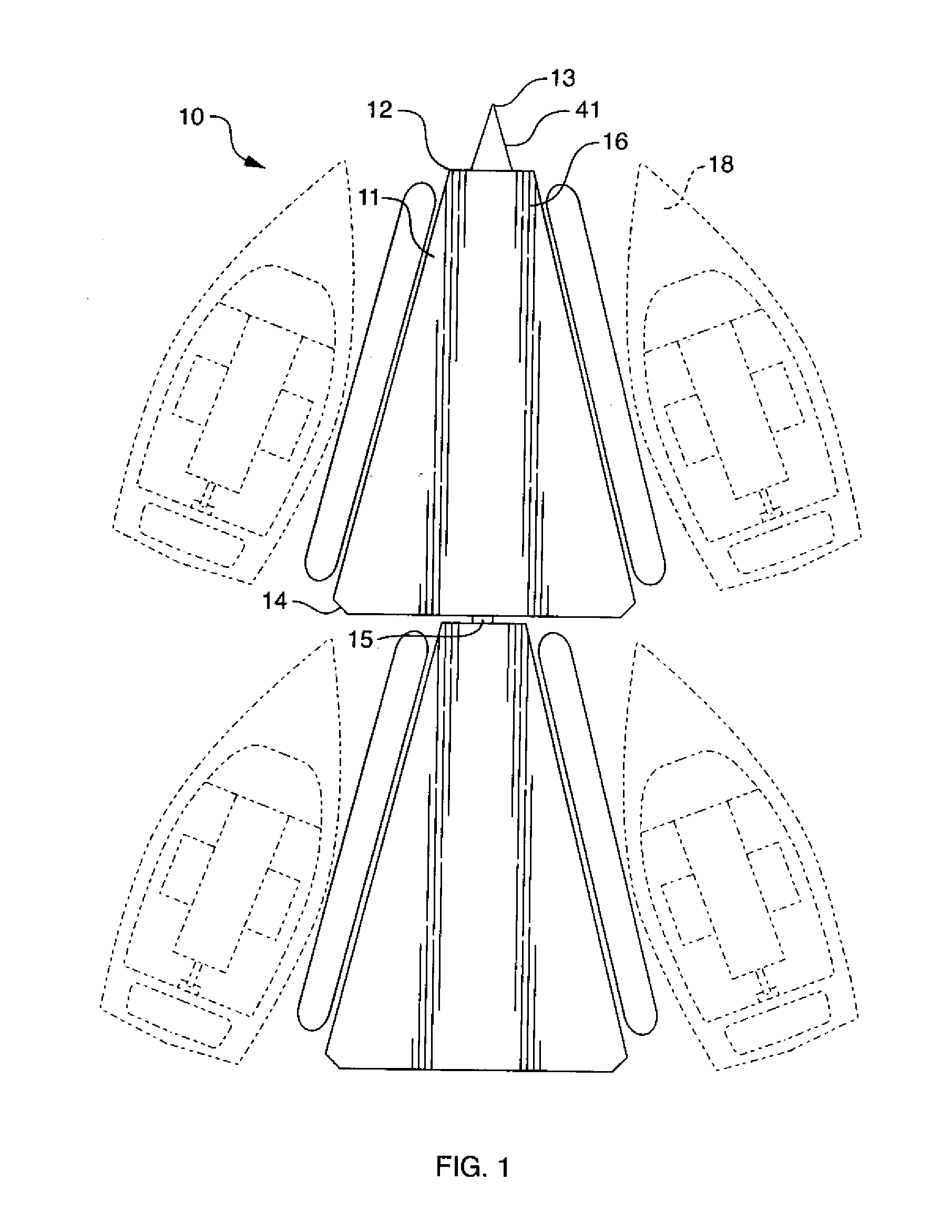Offshore floating dock
a floating dock and dock technology, applied in the field of boat docks, can solve the problems of long waiting list for moorings, no floating dock is adapted for offshore locations, and previous attempts to use offshore devices to solve the space problems associated with crowded harbors are largely unsuccessful
- Summary
- Abstract
- Description
- Claims
- Application Information
AI Technical Summary
Benefits of technology
Problems solved by technology
Method used
Image
Examples
Embodiment Construction
[0027]The invention features a boat docking system designed to accommodate a greater number of boats in a given harbor than would normally be allowable in view of coastline space constraints. Only one anchor is needed to maintain the docking system.
[0028]The preferred docking unit of the invention is preferably, although not limited to, about twenty feet long and holds two or more boats in a manner so that the boats are held in position into the wind when tied to the floating dock. Each dock is preferably angled because it is easier for a sailboat to tie on to an angled dock rather than a straight dock or mooring because the wind tends to push the boat into a bumpered dock causing undesirable, sudden motion of the boat, its passengers, and its contents. FIGS. 1–3 show three slightly different embodiments, generally referred to as docking units 10, 20, and 30, respectively, of the docking system of the invention, each providing for two to four mooring stations. A boat is moored using...
PUM
 Login to View More
Login to View More Abstract
Description
Claims
Application Information
 Login to View More
Login to View More - R&D
- Intellectual Property
- Life Sciences
- Materials
- Tech Scout
- Unparalleled Data Quality
- Higher Quality Content
- 60% Fewer Hallucinations
Browse by: Latest US Patents, China's latest patents, Technical Efficacy Thesaurus, Application Domain, Technology Topic, Popular Technical Reports.
© 2025 PatSnap. All rights reserved.Legal|Privacy policy|Modern Slavery Act Transparency Statement|Sitemap|About US| Contact US: help@patsnap.com



